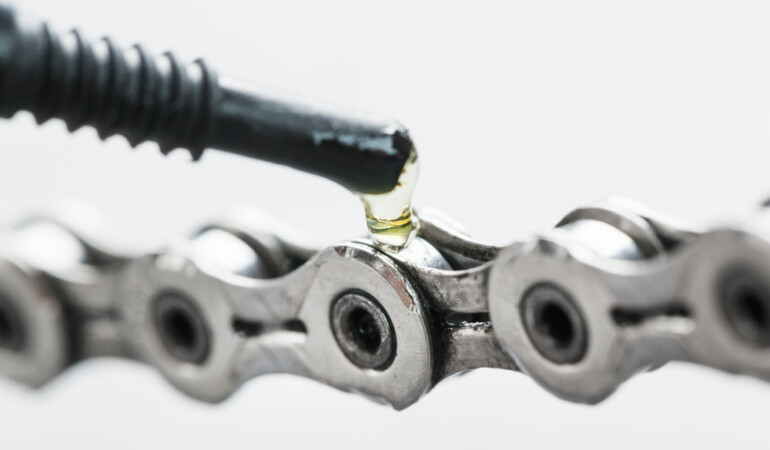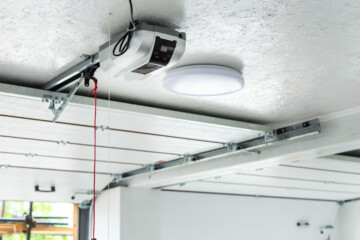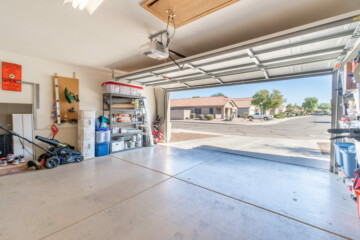Conducting a pre-lubrication maintenance checklist is essential to identify potential issues, prevent wear and damage, and ensure your garage door’s optimal functioning and longevity. It allows you to address any issues before applying lubrication, contributing to a smoother and more effective lubrication process.

How To Lubricate A Garage Door (Tracks, Rollers, and Springs) – FIX Garage Doors CA Guide
Pre-Lubrication Maintenance Checklist
Before delving into lubrication, conducting a comprehensive pre-lubrication maintenance checklist is essential to ensure your garage door’s optimal functioning. Regular upkeep can prevent issues and extend the lifespan of your door.
Precision in garage door maintenance is paramount. While routine pre-lubrication inspections can address minor wear and tear, understanding the nuances of repair is crucial. Knowing what components can be effectively repaired versus those requiring immediate replacement ensures a seamless and reliable garage door operation in the long run.
Oleg Chudnovski, CEO
1. Visual Inspection:
- Examine the entire garage door system, including rollers, hinges, tracks, and springs.
- Look for signs of wear, rust, or damage.
- Check for loose nuts and bolts.
2. Test the Door Operation:
- Open and close the garage door multiple times to observe its movement.
- Listen for unusual noises, such as grinding or squeaking.
- Ensure smooth and balanced operation.
3. Clean the Door Surface:
- Wipe down the door with a damp rag to remove dust and debris.
- Inspect for any signs of dirt accumulation on moving parts.
4. Inspect the Tracks:
- Examine the garage door tracks for any bent or misaligned sections.
- Ensure the tracks are securely attached to the walls.
5. Check for Safety Features:
- Test the auto-reverse feature of the garage door opener.
- Verify that the door stops and reverses when encountering an obstruction.
What Should You Use To Lubricate Your Garage Door?
Choosing the right lubricant is paramount for effective garage door maintenance. Different components may require specific types of lubricants to ensure optimal performance and longevity.
1. White Lithium Grease:
- It is ideal for metal-to-metal applications, providing long-lasting lubrication and rust protection.
- Suitable for hinges, rollers, and tracks.
2. Silicone-Based Lubricant:
- Resistant to temperature extremes and does not attract dirt.
- It is ideal for plastic components like nylon rollers, ensuring smooth and noise-free operation.
3. Lithium-Based Grease:
- Versatile and suitable for various garage door components.
- It offers good water resistance and prevents friction and wear.
4. Automotive Brake Cleaner:
- Use for cleaning and degreasing metal components before lubrication.
- Removes old lubricant and dirt buildup.
5. Avoid WD40:
- It is not recommended for long-term garage door maintenance.
- It attracts dirt and may not provide sufficient lubrication for moving parts.
General Garage Door Lubrication Tips
Now that you’ve gathered the necessary materials, it’s time to proceed with lubrication. Follow these general tips for thorough and effective application.
1. Prioritize Moving Parts:
- Concentrate on lubricating areas with moving parts like hinges, rollers, and springs.
- Apply lubricant sparingly to avoid excess buildup.
2. Use a Step Ladder:
- Use a step ladder to access higher components like hinges and the top rail safely.
- Ensure the ladder is stable and positioned on a flat surface.
3. Wipe Excess Lubricant:
- After applying lubricant, wipe away any excess with a clean cloth.
- Excessive lubricant can attract dirt and create a mess.
4. Pay Attention to Springs:
- Lubricate garage door springs lightly to reduce friction and noise.
- Use an appropriate lubricant that suits your door’s specific type of springs.
5. Lubricate Rollers and Tracks:
- Apply lubricant to both the rollers and the tracks for smooth movement.
- Use a silicone-based lubricant on tracks to prevent the accumulation of debris.
6. Schedule Regular Maintenance:
- Make lubrication part of your regular maintenance routine.
- Perform checks and lubrication every six months for optimal results.
Choosing the Right Garage Door Lubricant for Your Door
Selecting the appropriate lubricant is crucial for the longevity and performance of your garage door. Different components may require specific types of lubricants. Consider the following options based on your door’s needs.
1. White Lithium Grease:
- It is ideal for metal-to-metal applications like hinges and rollers.
- Offers excellent lubrication and rust protection.
- It is well-suited for areas with heavy friction.
2. Silicone-Based Lubricant:
- Best for reducing friction on plastic components, such as nylon rollers.
- It is resistant to extreme temperatures and doesn’t attract dirt.
- Suitable for quiet and smooth operation.
3. Lithium-Based Grease:
- A versatile option is suitable for various door components.
- It provides good water resistance and prevents wear.
- Effective for hinges, rollers, and tracks.
4. Automotive Brake Cleaner:
- Use for cleaning and degreasing metal parts before lubrication.
- Removes old lubricant and dirt, ensuring a clean surface.
- Ensure proper ventilation during use.
5. Avoid WD40:
- While WD40 is a popular household lubricant, it is not recommended for long-term garage door maintenance.
- It attracts dirt and may not provide sufficient lubrication for moving parts.
Lubricate Door Hinges and Rollers
Proper lubrication of door hinges and rollers is essential for maintaining smooth and quiet door operation. Follow these steps for effective lubrication.
1. Gather Your Tools:
- Choose the appropriate lubricant based on the material of your hinges and rollers.
- Have a rag or cloth for wiping away excess lubricant.
2. Inspect Hinges and Rollers:
- Check for signs of wear, rust, or damage on hinges and rollers.
- Ensure that all components are securely attached.
3. Apply Lubricant:
- For metal hinges and rollers, use white lithium grease or lithium-based grease.
- For plastic components like nylon rollers, opt for a silicone-based lubricant.
- Apply a small amount of lubricant to each hinge pivot point and roller.
4. Move the Door:
- Open and close the door several times to allow the lubricant to distribute evenly.
- Listen for any improvement in smoothness and noise reduction.
5. Wipe Excess Lubricant:
- After lubrication, wipe away any excess lubricant with a clean cloth.
- Excessive lubricant can attract dirt and affect performance.
Lubricate the Top Rail and Arm Bar
The top rail and arm bar play a significant role in the garage door’s movement. Proper lubrication ensures their smooth functioning. Here’s how to do it.
1. Secure the Area:
- Ensure the garage door is fully open and secured in place.
- Use a step ladder if needed to access the top rail and arm bar.
2. Apply Lubricant:
- Use white lithium grease or lithium-based grease for metal components.
- Choose a silicone-based lubricant for plastic parts, such as nylon rollers on the top rail.
- Apply a small amount of lubricant along the length of the top rail and arm bar.
3. Move the Door:
- Open and close the door to allow the lubricant to spread evenly.
- Pay attention to any resistance or noise during movement.
4. Wipe Excess Lubricant:
- After lubricating, wipe away any excess lubricant to prevent buildup.
- Keep the area clean to avoid attracting dirt and debris.
Lubricating Garage Door Springs
Lubricating garage door springs is crucial for preventing friction and reducing wear. Follow these steps for safe and effective lubrication.
1. Safety First:
- Disconnect the garage door opener to ensure the door stays in the open position.
- Use a step ladder to access the springs safely.
2. Choose the Right Lubricant:
- Opt for a silicone-based lubricant or white lithium grease for metal springs.
- Apply a small amount to each spring, focusing on the coils.
3. Distribute the Lubricant:
- Open and close the door several times to allow the lubricant to spread across the spring surfaces.
- Listen for any improvement in noise reduction and smooth operation.
4. Inspect for Wear:
- While lubricating, visually inspect the springs for any signs of wear or damage.
- If you notice significant wear, consider consulting a professional for further evaluation.
Vacuum and Wipe Down Garage Door Tracks
Cleaning and maintaining your garage door tracks is a crucial part of the lubrication process. Follow these steps to ensure smooth door movement.
1. Safety Precautions:
- Disconnect the garage door opener to prevent accidental activation.
- Use a vacuum with a narrow nozzle attachment to remove loose dirt and debris from the tracks.
2. Wipe Down the Tracks:
- Use a damp rag to wipe down the inside of the tracks.
- Inspect for any stubborn dirt or residue, and clean as needed.
3. Apply Lubricant:
- Use a silicone-based lubricant on the inside of the tracks to reduce friction.
- Apply a thin layer along the entire length of the track.
4. Test Door Movement:
- Open and close the door to ensure smooth movement along the tracks.
- Listen for any unusual sounds or resistance.
5. Regular Maintenance Schedule:
- Incorporate track cleaning and lubrication into your regular garage door maintenance routine.
- Aim to perform this task every six months for optimal results.
Following these comprehensive steps and tips ensures proper maintenance and lubrication of your garage door. Regular attention to these details contributes to a smoother, quieter, and more durable garage door system.
Don’t hesitate to contact us at (905) 247-6699 and (888) 242-0777 for toll-free assistance. We offer same-day garage repair service in Toronto, Barrie, Aurora, Newmarket, and other surrounding GTA areas to ensure your garage opener and door are back in perfect working condition.
Date of page creation: December 18, 2023
Page update date: December 18, 2023
FAQs for Pre-Lubrication Maintenance Checklist:
Why is a pre-lubrication maintenance checklist necessary for a garage door?
How often should I perform a pre-lubrication visual inspection on my garage door?
Conducting a visual inspection regularly is recommended, ideally before each lubrication session. By inspecting the entire garage door system, including rollers, hinges, tracks, and springs, you can proactively identify and address any signs of wear, rust, or damage, preventing potential issues in the long run.
What are the key safety features to check during pre-lubrication maintenance?
As part of the pre-lubrication checklist, ensure that you test the auto-reverse feature of the garage door opener. Verify that the door stops and reverses when encountering an obstruction. These safety features are crucial for preventing accidents and ensuring the safe operation of your garage door system.
FAQs for Choosing the Right Garage Door Lubricant:
Why is it important to choose the right lubricant for garage door maintenance?
Choosing the right lubricant is crucial to ensure the effective functioning and longevity of different garage door components. Using specific lubricants for each part, such as white lithium grease for metal components and silicone-based lubricant for plastic parts, helps prevent friction, wear, and corrosion, contributing to the overall performance of the door.
Can I use WD40 for garage door lubrication?
It is not recommended to use WD40 for long-term garage door maintenance. WD40 may attract dirt and might not provide sufficient lubrication for moving parts. Choosing specialized lubricants like white lithium grease, silicone-based lubricant, or lithium-based grease is preferable for optimal garage door performance.
How often should I lubricate my garage door components?
Incorporating lubrication into your regular maintenance routine and performing checks and lubrication every six months is advisable. Regular lubrication ensures smooth door operation, reduces friction, and contributes to the overall durability of the garage door system.
FAQs for Lubricating Garage Door Components:
Why should I prioritize lubricating moving parts during garage door maintenance?
Concentrating on lubricating areas with moving parts, such as hinges, rollers, and springs, ensures smooth door operation and reduces friction. Proper lubrication contributes to a quieter and more efficient garage door system.
Is it necessary to wipe away excess lubricant after application?
Yes, wiping away any excess lubricant with a clean cloth after application is crucial. Excessive lubricant can attract dirt, creating a mess and potentially affecting the garage door’s performance. Wiping away excess lubricant helps maintain a clean and efficient system.
How frequently should I schedule lubrication for garage door components?
Make lubrication part of your regular maintenance routine, performing checks and lubrication every six months. This consistent schedule helps ensure optimal performance, prevents issues, and extends the lifespan of your garage door.



